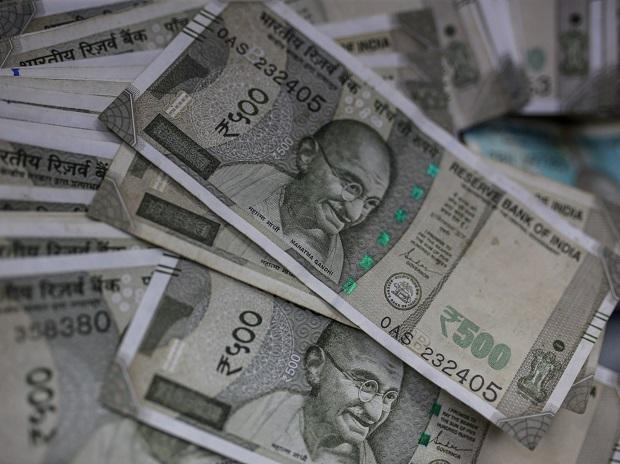[ad_1]
Sovereign bonds and the rupee weakened on Wednesday after Federal Reserve Chair Jerome Powell outlined a more aggressive path for US rate hikes than was expected, leading to concerns about capital outflows from emerging markets like India.
While dollar sales by exporters towards the end of the financial year helped the rupee claw back some losses, the yield on the 10-year government bond touched its highest intraday level since November 4, 2022, as US debt yields surged. Bond prices and yields move inversely.
The rupee closed at 82.06 per US dollar versus 81.92 at the previous close. Intraday, the domestic currency weakened to a low of 82.29 per dollar before receiving a boost from exporters looking to lock in dollar sales at lucrative levels, traders said.
Yield on the most liquid 10-year government bond closed at 7.45 per cent on Wednesday versus 7.43 per cent yield on Monday. The Indian bond and currency markets were shut on Tuesday for Holi. During the course of trade, the yield on the 10-year bond climbed to 7.47 per cent.
In 2023, the yield on the 10-year bond has jumped 12 basis points. The rise in government bond yields pushes up broader borrowing costs in the economy as sovereign debt is the benchmark for pricing debt issued by corporate entities.
Moreover, in a rare occurrence, the Indian bond yield curve has inverted, with the yield on the 364-day government Treasury bill currently three basis points higher than the yield on the 10-year bond. Under ordinary circumstances, longer-term bonds fetch higher returns in order to compensate for inflation and growth risks over a longer period.
While yield curve inversions in the US are known to be an indicator of an economic recession, the Indian yield curve could instead be reflecting a heightened degree of uncertainty about inflation, interest rates and tighter liquidity conditions in the banking system, traders said.
“Short term rates going up are also a sign of liquidity getting tighter. Market believes now that the RBI will also increase rates now. Data on inflation to be released on Monday will be crucial. Markets will remain edgy till then,” said Madan Sabnavis, Bank of Baroda’s chief economist.
“Theoretically such a phenomenon is seen heralding a recession. While that is not the case here, a slowdown is imminent,” he said.
According to ICICI Securities Primary Dealership’s head of trading Naveen Singh, yield on the 10-year bond could test the psychologically significant 7.50 per cent mark based on two key events: US jobs data on Friday and India’s inflation data due next week.
“It is a challenging situation for emerging markets now, the Fed could hike rates by 50 bps again this month after choosing smaller rate hikes towards the end of 2022. The rate differential between India and the US is set to become narrower,” Singh said.
While delivering his semi-annual testimony before the Senate Banking Committee on Tuesday, Powell said that the latest US economic data were stronger than expected, which suggests that the final level of interest rates would likely be higher than previously expected.
Higher US interest rates typically prompt global investors to flock to the world’s largest economy, thus leading to strength in the dollar and exerting pressure on emerging market currencies. The dollar index, which measures the currency against six rivals, was at 105.68 at 3:30 pm IST as against 104.60 at the same time on Monday.
In a bid to bring down high inflation, the Fed has, since March 2022, hiked interest rates by 450 basis points, marking its most aggressive tightening cycle in around four decades.
[ad_2]
Source link



